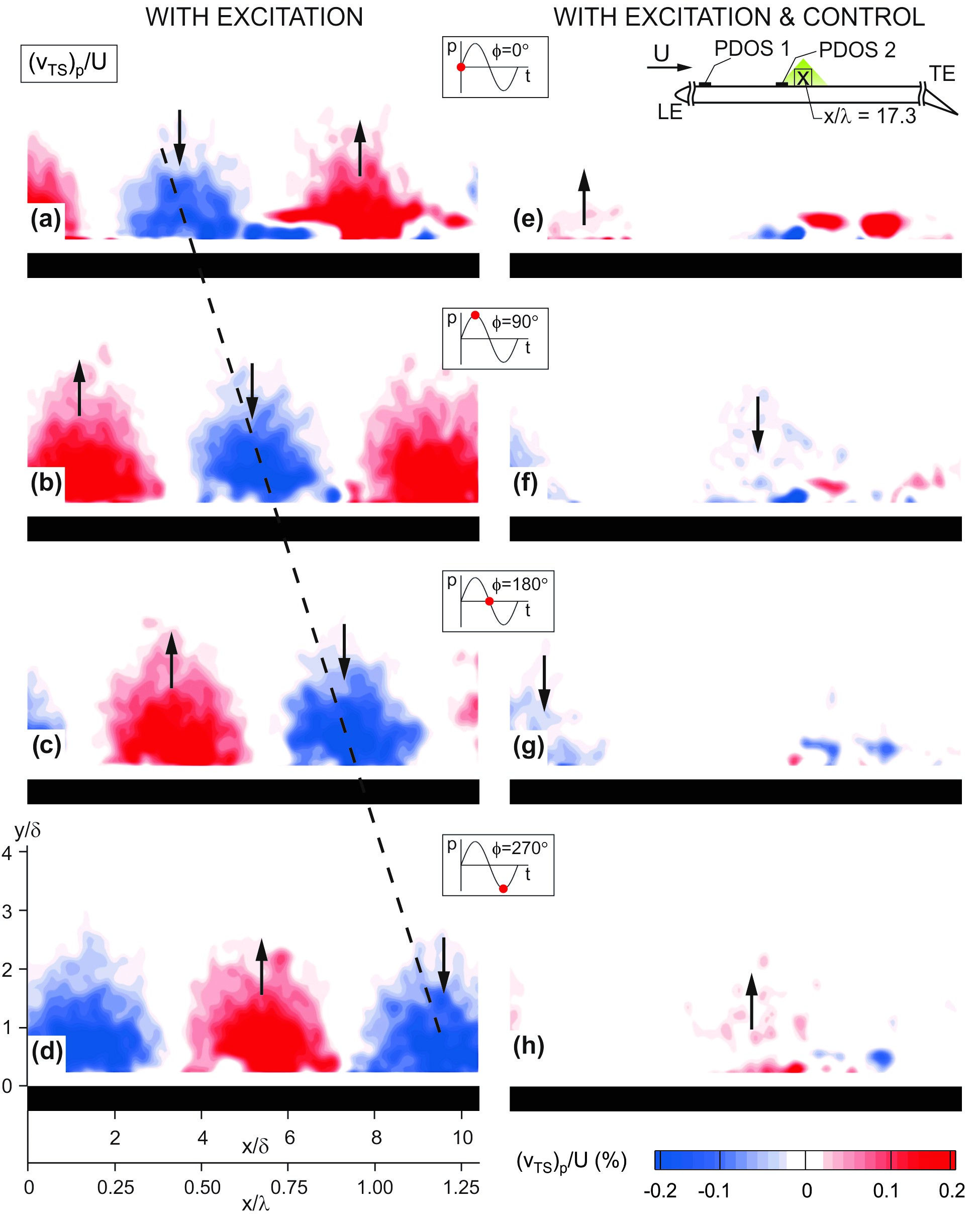A turbulent boundary layer greatly increases the drag on a wing, and therefore aircraft fuel consumption. By delaying the transition of organized, laminar flow into disorganized, turbulent flow, billions a year can be saved in fuel costs. One way that this transition can be delayed is by using a vibrating surface element to suppress the Tollmien-Schlichting (TS) waves responsible.
The Natural Laminar Flow (NLF) airfoil series is designed to passively delay the growth of TS waves. An array of Piezoelectric-Driven Oscillation Surface (PDOS) actuators are mounted on the suction side of the airfoil. The upstream actuator will excite a TS frequency that will grow and travel downstream. A second actuator will apply the anit-phase of the TS wave and use the destructive interference to reduce and eliminate the TS wave. Particle Image Velocimetry (PIV) will be used to quantify the results. By phase-locking the PIV data, the small velocity flucuations may be visualized.
The long term goal is to achieve closed loop control on natural TS waves on the NLF airfoil.

Figure 1: sample TS cancellation PIV from a previous version of the project. Excitation only (left) and with cancellation (right).
Related Publications:
- Dell'Orso, H., "Feasibility of Using Dynamically Oscillating Surfaces to Control Tollmien-Schlichting Waves." Rensselaer Polytechnic Institute M.S. Thesis, August 2016.
- Amitay, M., Tuna, B.A., and Dell'Orso, H., "Identification and Mitigation of T-S Waves Using Localized Dynamic Surface Modification." Physics of Fluids, Volume 28, Issue 6, DOI: 10.1063/1.4953844, 2016.